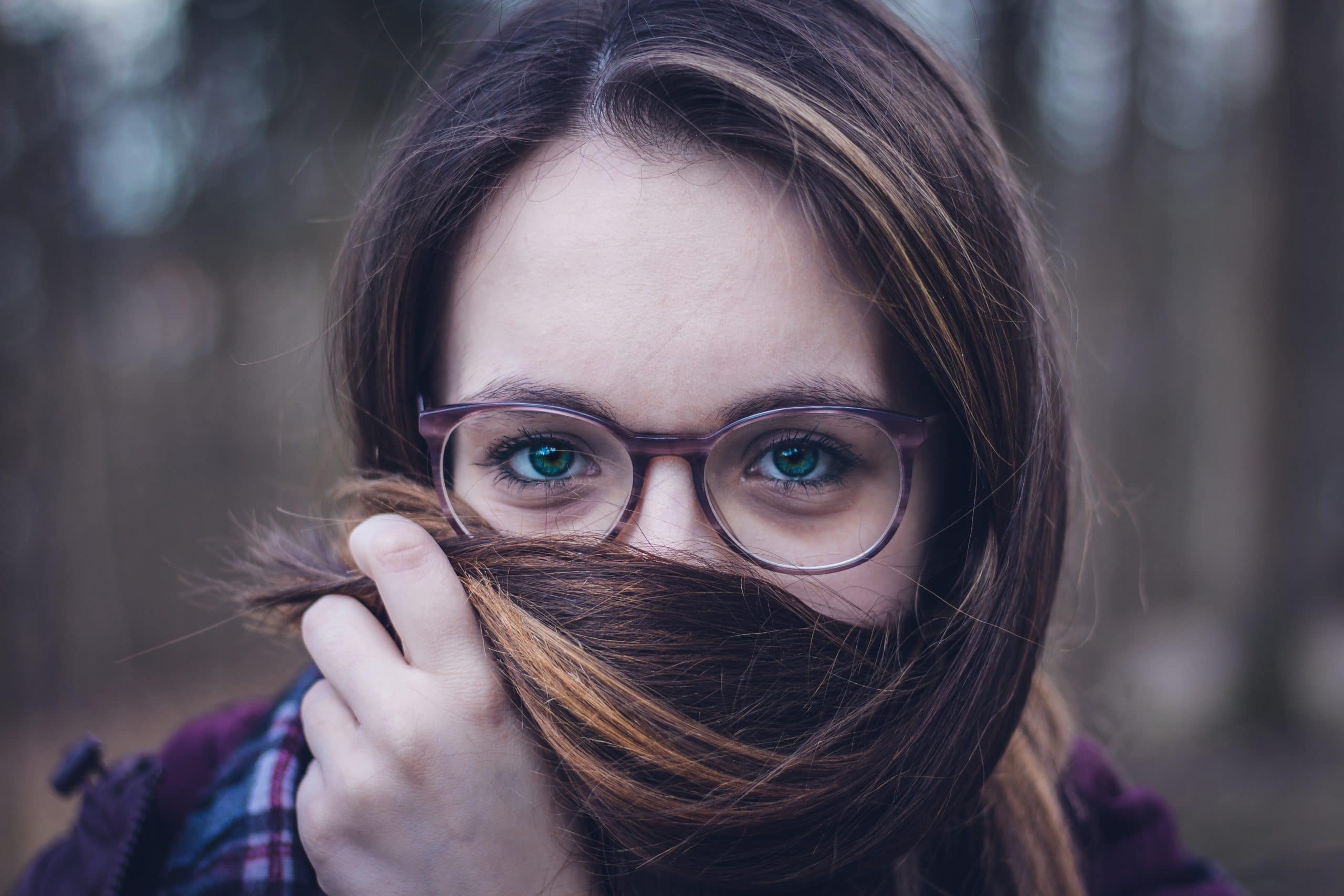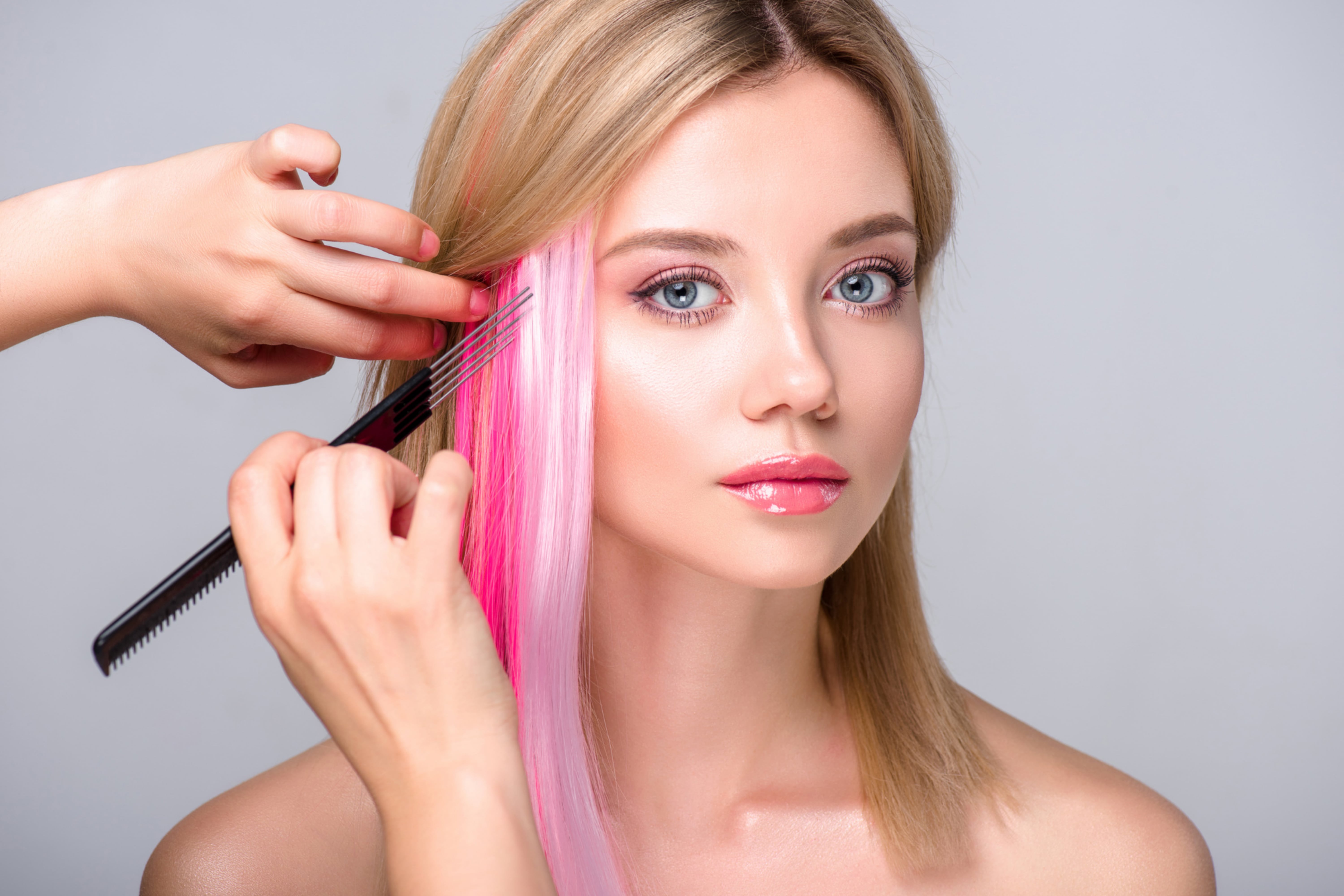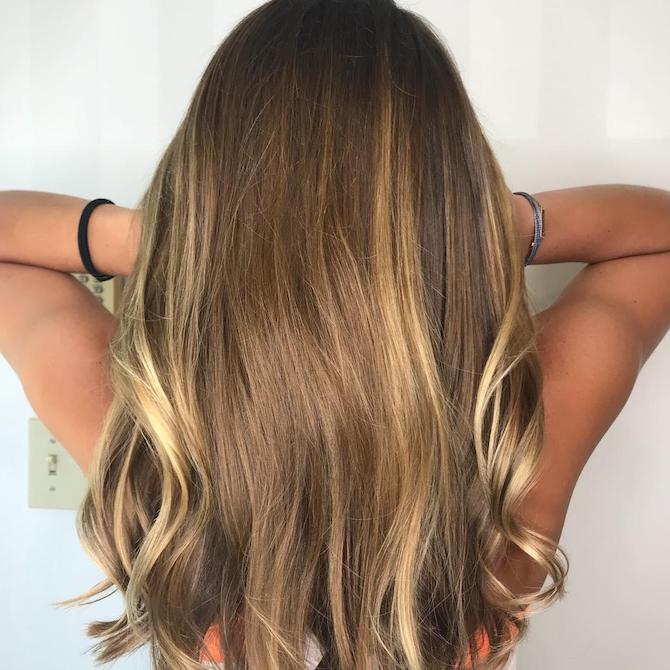What color to dye over green hair when it’s time for changes?
Bright hair colors are on top of the trends and don’t seem to lose their positions. Billie Eilish, Kylie Jenner, Lady Gaga and many other celebrities dyed their hair green and looked amazing with that color. Whoever or whatever might be your inspiration for such an adventurous experiment, green hair color may bring you a vivid spectrum of emotions.
Teal and green hair color can bring you a lot of attention, make you feel extraordinary, spectacular, and loud. Indeed, this is one of the boldest colors to choose for hair dyeing. But what to do with faded green hair?
Although, green tint is the hardest one to get rid of, there are plenty of effective methods to deal with it. If you feel like you need more natural color or some other bright changes, you should know some tips and rules.
How to Cover the Green Hair with Semi-permanent Dye and Permanent Dye?
Several tips for successful dying over green hair.
To change the hair color from green to some natural brown or blonde, you might need to remove the green hue from the hair. But if you want to continue the adventure with dyeing hair into some unnatural colors, you may avoid the procedure of removing the green hue and try covering green hair directly with dye.
Here are the ways to change the green hair color:
- Visit the hair salon and let the professionals deal with it.
- Try to get rid of the color using homemade methods and dye the hair by yourself using box hair dye.
- Use some dye on top of the green applying the principles of the color theory.
We highly recommend to go to the salon and let the hair colorist make these changes.

Related: What is dimensional hair color?
What methods are used in salons to change the green hair color?

Professional hair colorists know that green is the hardest color to remove from hair. If you need to go back to some natural colors or some bright colors that should be dyed on a very light base, you will definitely need to bleach your hair.

It may take patience because it often requires several sittings to completely remove the green hue.
The good colorist has enough knowledge and experience to make the proper plan on how to achieve the color their client wants. It depends on the condition of hair, the dye that was used, the intensity of color and the final desirable result. It might be easier to achieve dark tones than blonde.
Usually, to make the bleaching process less harmful for hair, it takes several sittings.
After every bleaching, the hair is dyed with the dye that includes red color to reduce the green. Some products are usually recommended to use additionally to restore the hair structure and to wash away the green tint.
Professional colorist knows the newest and most effective hair products to use for solving the problem and to reduce the damage for the hair while changing the color. Trusting the colorist is the safest and effective way to get the right color and to keep the hair healthy.
The Complexity of Using Purple Dye Over Green Hair
It’s a common misconception that any color will cover the green. In the realm of color theory, purple is often seen as an opposite to green, making purple dye a popular choice for neutralizing green undertones. Yet, not all purples are created equal, and the shade’s depth and tone can influence its efficacy over green.
The previous hair dye you used, whether it was a semi-permanent or permanent hair dye, plays a crucial role in determining the next steps. If you dyed your hair with a semi-permanent green, it might fade over time, making it easier to overlay another semi-permanent dye or even a permanent dye. Using a purple dye over green hair in such cases can often help neutralize the green, giving a more natural or ashy tone.
However, if your hair was colored green with a permanent hair dye, the process becomes more complex. The green can only be covered effectively with another permanent dye. In such cases, a deeper or more vibrant purple dye might be required to counteract and cover the green, ensuring the desired outcome without traces of the previous color.
Transitioning to a New Shade: How Colors Cover Green Hair
When thinking of applying a new color, understanding your base color and the residual color left on your hair from the green hair dye is vital.
If you aim to transition your hair color to purple or any other shade, you might need to bleach your hair before applying the new dye.
This step helps strip the green color from the hair, making it more receptive to the new dye. However, excessive bleaching can cause your hair to become damaged, so caution is advised.
Decoding the Green Hair Dye Phenomenon in Hair Coloring
The allure of green hair dye has been on the rise with more people experimenting with this vibrant shade. However, depending on the shade of green and whether it was achieved with a semi-permanent green dye or permanent dye, the approach to changing it varies.
If you’ve had the green color in your hair for too long and it has faded unevenly, you might be contemplating a new hair color.
Some tips to fade the green color by yourself

If you don’t need to completely remove the green hue from hair, you may try to wash it away by yourself. There are some clarifying shampoos that may help to reduce the color significantly. Deep cleansing shampoos also help to fade the color.
Good professional shampoo used with hair conditioner may solve the problem and care for the hair. After washing your hair with clarifying shampoo you may try to dye it by yourself on top of the faded green tint.
Red over green hair neutralizes the green and may give you the color from brown to bright red.
There are also some homemade recipes for getting rid of the color, like
- ketchup for green hair,
- lemon juice,
- baking soda,
- vinegar,
- vitamin C.
These products may help you to fade the color but they are not reliable and may damage your hair.
Strategies for Effective Color Change: Cancel Out Green Hair
If you wish to cover green hair, consider the basics of color theory. Opposite colors on the color wheel can neutralize each other. For instance, red tones can help cancel out the green. In some cases, colors cover green hair effectively when the green is not too vibrant or deep.
If you’re unsure about the next steps, especially if you use a permanent hair dye, it’s always wise to consult a professional.
They can offer insights, especially if the green color is challenging to cover, and suggest whether you should bleach your hair or use a clarifying treatment first.
Considering Previous Hair Treatments
The type of hair dye you previously used affects the next steps. If you had applied a semi-permanent green dye, then you might be able to cover it with any color of your choice after a few washes.
However, if the green dye was permanent, the process becomes a tad more complex. You might need to bleach your hair first or use a clarifying chemical treatment for your hair to remove the green color.
This prepares the hair before applying a new shade, ensuring it can absorb the new color efficiently.
Considerations for the Next Dye Job
The key to a successful color transition lies in understanding the nature of the dye. A semi-permanent dye can be covered more easily than a permanent one. However, each dye type interacts differently with the hair fiber, and how it allows the new color to deposit can vary.
For instance, a semi-permanent dye offers flexibility as it coats the hair’s outer layer, while a permanent dye penetrates deeper, altering the hair’s internal structure. Knowledge of these nuances ensures that your next color
Dyeing the hair on top of the green color

If you are open for experiments and don’t need clear and bright color which requires a very light base, you may try dying over green hair or teal green hair with another dye without bleaching it.
The Role of Different Dyes
There’s a vast difference between permanent hair dye and semi-permanent dye. A permanent dye penetrates deeper into the hair fiber, altering the inner structure, while a semi-permanent color sits on the outside layer of the hair, slowly fading with each wash.
If you’ve colored your hair green with permanent dye, you might consider using a brown dye over green hair or even a purple dye over green hair. Purple, in particular, can help neutralize the green tones in your hair due to its contrasting position on the color wheel.
Some basic principles of the color theory may help you with that.
Understanding the Color Wheel, Color Theory and Green Tones
When considering what hair color to use to cover the green, it’s essential to grasp the basic principles of color theory. The color wheel that all hair color stylists refer to provides insights into which colors can neutralize or enhance each other.
Given that green on the color wheel is opposite to red, red tones are often utilized to cancel out green hair. Yet, if you’ve dyed your hair green with a permanent dye, the process might differ slightly.
Understanding the color wheel theory may give you an opportunity to plan the steps to take to change your color from green to any other.

- The opposite color to green is red, so red dye over green hair will cancel the green.
- Any dye of red (also pink and purple) color that does not contain hydrogen peroxide and ammonia may help you to reduce the green color safely enough.
- Red dye over teal hair or red dye over blue hair may give you some brownish color.
- Putting blue dye over green hair may help you to get some turquoise shade or dark teal hair.
Protecting Your Hair’s Integrity
It’s crucial to avoid causing damage to your hair during this transition. Layering a permanent color with a semi-permanent dye or vice versa might not always yield the desired results.
Always conduct a strand test before fully coloring your hair. If you’re looking to cover the green hair with a purple hair shade, ensure the green tones are adequately neutralized to avoid muddy results.
What may be done if the bleached hair turned green after dying?

- A common concern of the ones that love to dye their hair by themselves is dyed hair turned green. This may happen because of the contact with water that contains chlorine.
- It is recommended to avoid pools for 7 days after dyeing.
- The chlorine is the most common reason why blonde hair turns green after coloring.

- The color that was left in the hair after previous colorings may also appear as green.
Using henna for coloring may also be the reason why hair turned green after dying brown.
To reduce the green color in this case you may try to use deep cleansing shampoo, toning shampoo or to get professional help at the hair salon.
Post-Dyeing Hair Care for Longevity and Health
The most vital part is utilizing good care practices that should support hair care and the tint shade you have for your hair. Here are some straightforward tips to help you achieve that:
- Use Sulfate-Free Shampoos and Conditioners: Sulfates can potentially remove sebum and cause the fading of hair colours. Use products labeled for color treated hair to keep your hair looking vibrant and reinstated.
- Limit Washing Frequency: Shampooing your hair many times can also cause a problem with the colors on your hair. Ideally, it is advisable to wear hair after every two to three days to ensure that your color lasts for a long time and also prevents the hair from being stripped of natural oils.
- Protect Your Hair from Sun Exposure: Sun rays with UV radiation can bring color away and make hair dry. To protect the tresses, while in the sun, use a hat, or any hair product that is UV protected.
- Avoid Excessive Heat Styling: You will not be surprised to find out that the more heat tools one uses for straightening or curling, the more harm is done to the hair and the color is faded. If you have to use them, it is recommended to use heat-protecting sprays and to set the temperature to the lowest.
- Schedule Regular Trims: It is best to trim hair frequently to avoid split ends and keep it in good condition. Strive to give your hair a trim every six to eight weeks to keep it well groomed and to avoid splits that journey up the hair strand.
Deep Condition Weekly: Hairs which have been dyed become dry. By applying a deep conditioning treatment it is possible to replenish the moisture and thus your hair will look silkier and more easily manageable when washed once a week.
Final Tips for a Successful Transition
Experiments with appearance may be pure joy. To be sure you are getting the exact color you want and to decrease the chance of having a problem like “I dyed my hair blue and it turned green” it is better to let the professional colorist make the changes.
- It’s tempting to jump into another hair dye adventure, especially with the allure of exciting colors.
- However, remember that transitioning from a permanent to a semi-permanent color or layering one over a permanent dye can be challenging.
- To cover up the green, you might need to consult with a professional or ensure you’re well-versed in the color wheel that all hair color enthusiasts swear by.
Whether you’re looking to get rid of green or embrace a new shade, understanding the science behind hair dye can make the process smoother and more rewarding.
But if you are not afraid of having an unexpected result, you may try to get the bright color by yourself, following the rules of the color theory.








